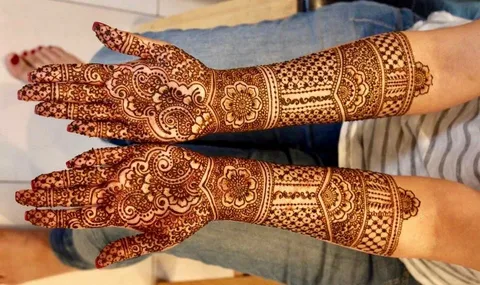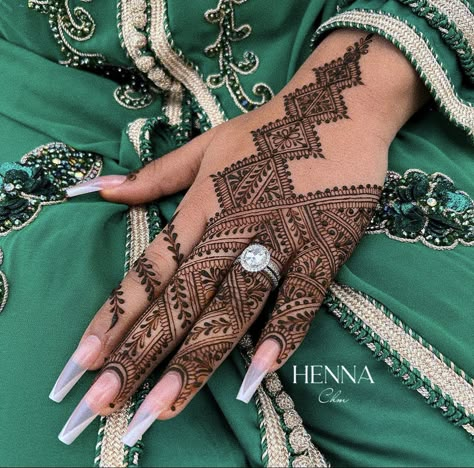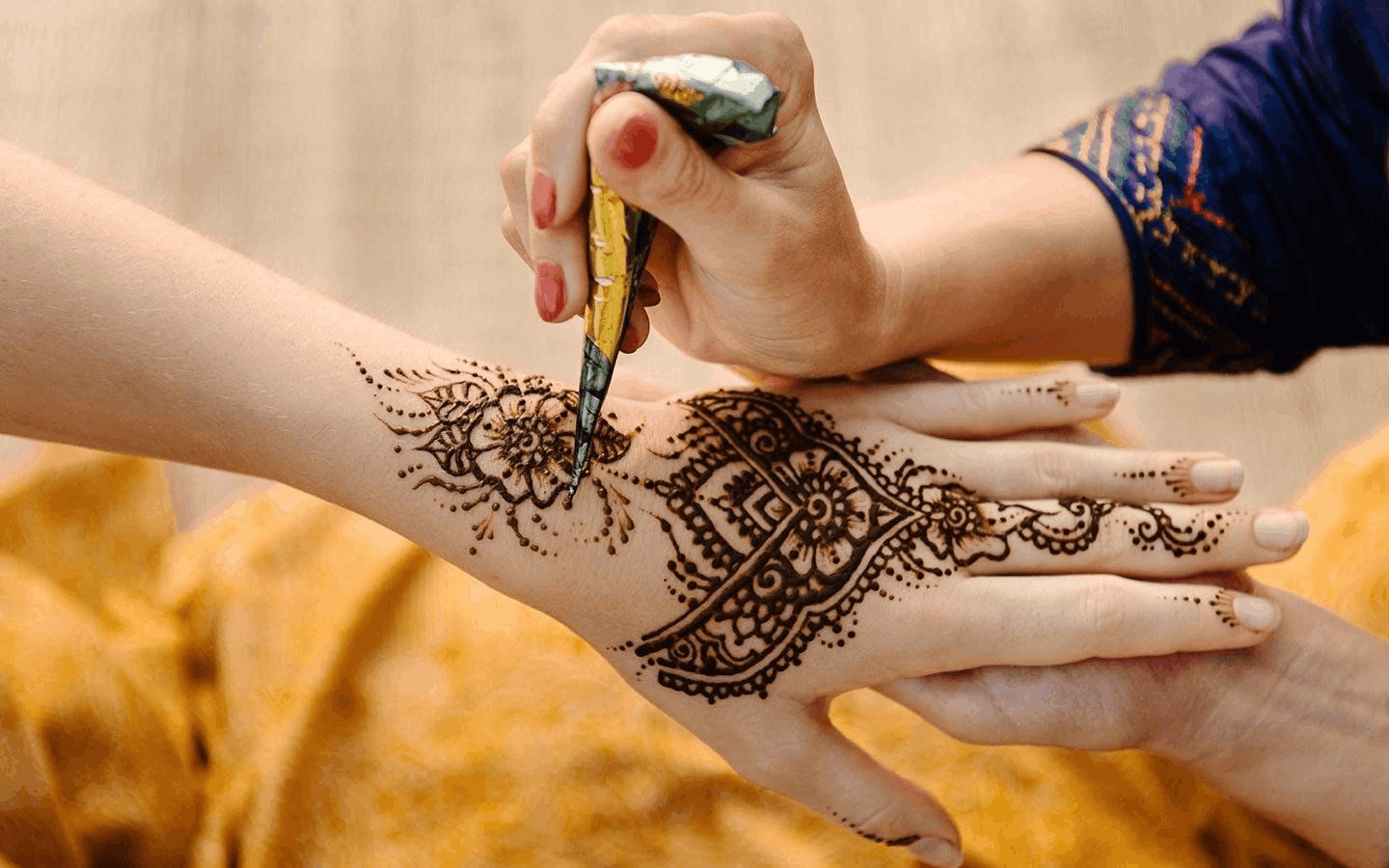Henna has been part of weddings, festivals, and family gatherings for generations. The smell of fresh paste, the laughter during mehndi nights, and the deep stains that tell stories all show why people still love it today. From simple flowers on a child’s hand to detailed bridal designs, henna is more than decoration; it’s tradition, memory, and art.
Why do people still love henna so much?
Henna has been around for hundreds of years, but it still feels fresh every time someone puts it on their hands. I remember the first time my cousin had her bridal mehndi night. The smell of crushed leaves mixed with lemon and sugar filled the whole house. Aunties sat in a circle, talking about their own weddings, while kids begged to get small flowers drawn on their palms. That night showed me that henna is not just about designs. It’s about family, stories, and joy.

What is henna, and where does it come from?
Henna is made from the leaves of the henna plant. The leaves get dried, ground into powder, and mixed with water, lemon, or tea to make a paste. People in India, Pakistan, the Middle East, and North Africa have been using it for centuries. It’s not only for beauty. Long ago, henna was also used to cool the skin in hot summers. Farmers would put it on their hands and feet to beat the heat.
Why is henna such a big deal at weddings?
If you’ve ever gone to a South Asian wedding, you know the mehndi night is one of the loudest, happiest parts. Brides sit for hours while artists draw tiny flowers, vines, and sometimes even the groom’s name hidden in the design. Guests try to find the hidden name later as a fun game.
Some folks say the darker the henna stain, the stronger the love in the marriage. Others say it shows how much the mother-in-law will love the bride. Do people really believe it? Some laugh it off, some take it seriously. Either way, it adds charm to the night.
Can henna tell stories?
Yes, it can. I once met a woman who asked her mehndi artist to draw airplanes and suitcases in her design because she and her husband met while traveling. Another bride wanted tiny footballs drawn because her husband loved the sport. Henna becomes more than just flowers. It can show who you are and what you love.
Is henna only for women?
No, not at all. In many cultures, men also use henna. Grooms sometimes have designs on their hands too, though simpler than the bride’s. In some African villages, men stain their beards or hair with henna. Kids also love small tattoos, like a star or a smiley face.
Does henna change with seasons?
Yes. In summer, henna stains often look brighter and last longer because the heat helps the dye set. Around Eid or Diwali, streets fill with pop-up henna stalls. Artists sit with cones, ready to decorate anyone who lines up. On rainy days, the smell of wet henna mixed with chai makes the whole mood feel festive.
What about safety? Is all henna safe?
Here’s where people need to be careful. Natural henna is safe. It has a greenish-brown color and smells earthy. But some shops sell “black henna” that has chemicals mixed in. This type can cause rashes, burns, and even scars. I once heard about a girl at a local fair who wanted a dragon tattoo in black henna. Within hours, her skin turned red and painful. Since then, families have warned kids to always ask for natural henna only.
Why do kids get excited about henna?
For kids, it feels like getting a tattoo without the pain. Little flowers, hearts, or cartoon characters make them feel special. I still remember a little girl crying at a wedding because her design washed off too fast. The auntie who applied it told her, “Don’t worry, next week I’ll make you a butterfly that will stay longer.” That moment showed me how henna connects generations.
Can henna be creative today?
Yes, big time. On Instagram and TikTok, you’ll see new styles mixing traditional and modern designs. Some artists add glitter, jewels, or even mix henna with white paint to create contrast. Brides in London sometimes ask for half-traditional, half-modern looks so they can feel connected to both culture and city life.
How long does henna last?
Most stains last one to two weeks. It depends on the skin type, how much you wash your hands, and even the weather. Some tricks help it stay longer:
-
Keep the paste on overnight.
-
Dab with lemon-sugar mix.
-
Avoid washing with soap right away.
A friend once bragged that her henna stayed three weeks because she wore gloves every time she did dishes. Everyone teased her, but it worked.
Why do people still keep henna traditions alive?
Henna brings people together. At weddings, at Eid, at Diwali, even at baby showers. It’s an excuse for laughter, gossip, and bonding. Some say it’s old-fashioned, but when you see kids running around showing their palms proudly, you know henna isn’t going anywhere.
Is henna only cultural or also personal?
Both. For some, it’s part of tradition. For others, it’s art or self-expression. I once read about a cancer survivor who decorated her bald head with henna designs after chemo. She said it made her feel beautiful again. That’s the power of henna.
What’s the future of henna?
Henna is spreading everywhere. In the UK and the US, people book henna for music festivals, parties, or just for fun. Some use white henna (safe body paint, not real henna) to stand out. Artists now mix old traditions with new styles. It shows that even if trends change, the heart of henna stays the same.
Final Thoughts
Henna isn’t just a paste on skin. It’s memory, laughter, stories, and community. From a bride’s hidden initials to a child’s butterfly tattoo, henna continues to bring joy. It’s one of those traditions that feels simple but holds deep meaning. Every stain fades, but the memory of when you wore it stays forever.
Also Read This: Aesthetic wallpaper
FAQs
What is henna?
Henna is a natural dye that comes from the henna plant. People use it for body art, like mehndi designs, and also for coloring hair.
What is henna made out of?
It’s made from the dried leaves of the henna plant. The leaves are crushed into a powder and mixed with water, lemon juice, or tea to make a paste.
Is henna really good for hair?
Yes, natural henna can make hair stronger and shinier. It also gives a reddish tint. Some people say it feels a little dry, so mixing it with oil or conditioner helps.
Is henna allowed in Islam?
Yes, henna is allowed. It has been used for centuries in Muslim weddings, Eid, and other celebrations. Many Hadiths even mention the Prophet Muhammad using or encouraging henna.
How long does henna stay on?
Henna usually lasts one to two weeks. It depends on your skin, how often you wash the area, and how well you care for the paste when it is applied.
